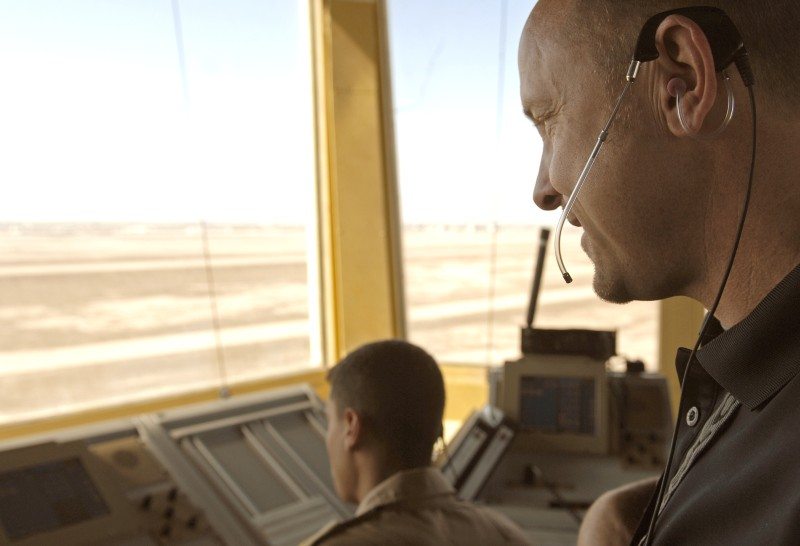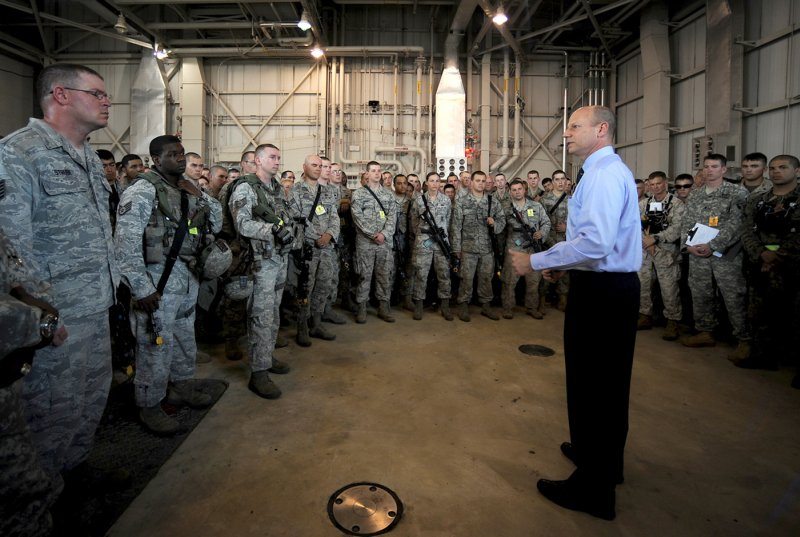Ten Air Force and Army air traffic controllers advising their Iraqi counterparts at major installations around Iraq convened here April 28 to discuss airfield plans for the final months before U.S. troops leave Iraq under a Dec. 31, 2011, mandate.
“(The meeting) was an excellent opportunity to see firsthand the results of our advisers’ hard work partnering with the Iraqi air force,” said Lt. Col. Daniel Kaltenbaugh, the Iraq Training and Advisory Mission – Air operations division chief. “They are to be commended on formulating a solid plan for success that we will follow through to the end of this historic chapter in Iraqi air traffic control.”
The air traffic controllers and advisers from here, Taji and Baghdad discussed the Taji airfield transition plan as U.S. forces prepare to turn over control to the Iraqi Army Air Corps controllers in the upcoming months, he said. The team also addressed the impact and specific operational requirements for U.S. air traffic controllers as their work locations shrink throughout the transition.
“The planning for the (air traffic control) program until end of mission was expertly done, and at this point, we are mostly adjusting to situations that arise in execution mode,” said Capt. Robert Hughes, the senior ITAM-Air air traffic control adviser. “The details of the end of mission are still fluctuating, but I’m looking forward to taking the framework … and adjusting it to fit whatever the final roll-out turns out being.”
Captain Hughes said the group of controllers talked about the equipment, personnel and capabilities their Iraqi partners could provide at the end of mission.
Last month, air traffic control advisers certified three Iraqi air traffic controllers from Taji and Ali airfields, bringing the total number of certified Iraqi air force controllers to 18, he said. In the past year, the Iraqi Civil Aviation Authority has also licensed six Iraqi air force controllers — a first in Iraq air force history.
“I am proud of the accomplishments the entire (air traffic control) training team has made over the past year,” said Capt. Maureen Trujillo, the former senior ITAM-Air air traffic control adviser. “Last May, we had no certified controllers, and today, we have 18. We are well on the way to providing the Iraqi air force and Iraqi Army Aviation Command the foundational air traffic control capabilities they will need in the near future.”
The next milestone on the horizon for Taji air traffic controllers is the grand opening of a new $11 million air traffic control tower.
“During the meeting, we discussed contingencies for moving into the new ATC tower here,” Captain Hughes said. “We hope it will be open before our air traffic controllers leave so we can help our Iraqi partners troubleshoot and get them acclimated to their new workspace.”










